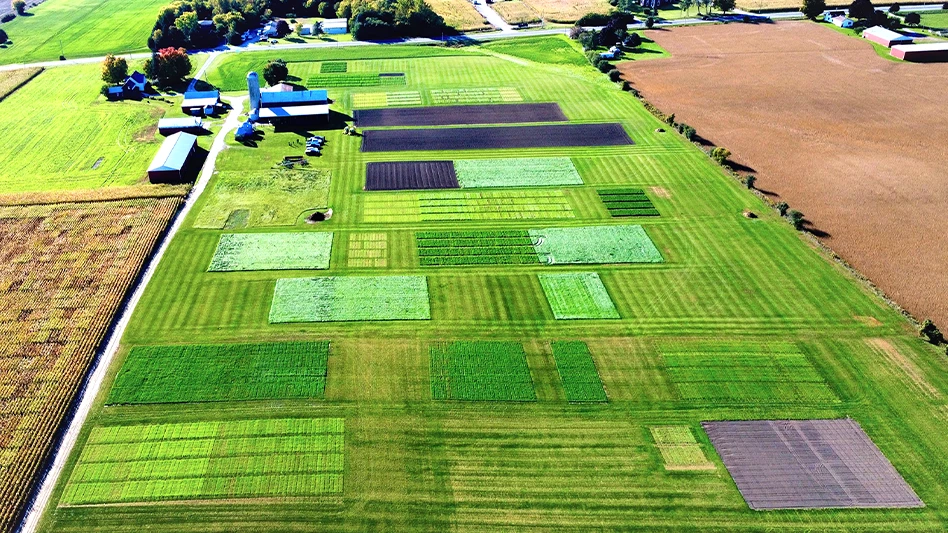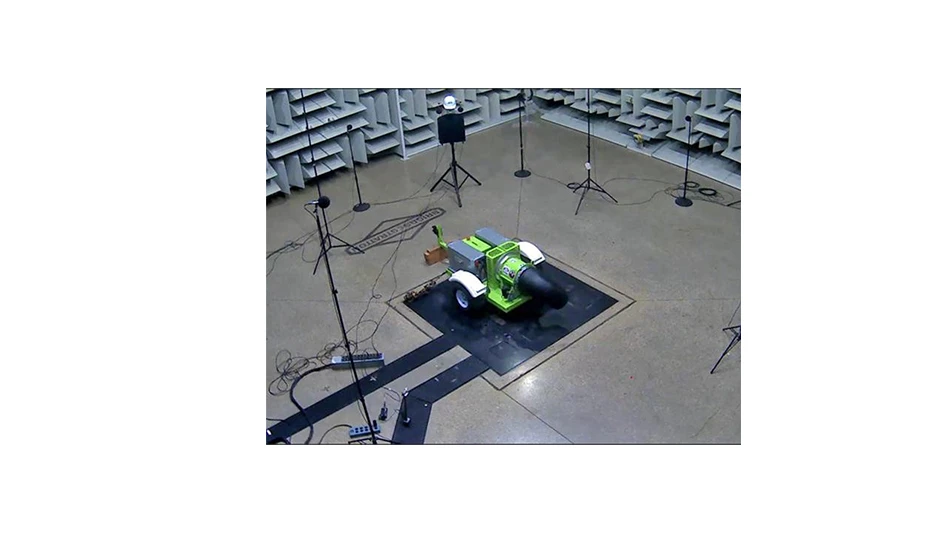
The primary and secondary damage done to golf courses by various beetles is devastating. Whether the larvae feed on the turf’s root system or predators such as birds or skunks dig for them as a food source, the surface scarring is ugly, widespread and costly.
The most effective way to treat for grubs using today’s insecticide technology is by using the preventive approach, especially if you know you have a history of white grubs on your course, says Jennifer Andon, program manager of the Ohio State University’s Pesticide Safety Education Program.
“Neonicotinoid insecticides are still the least expensive products to use,” Andon says. “Imidacloprid (Merit) or thiamethoxam (Meridian) are best put down in June into mid-July to prevent much of the damage you would see in the fall (at least here in Ohio). Clothianidin (Arena & Aloft) has a longer residual power and can be applied in May into mid-July.
“Ideally, you want to target the young instar larvae as they hatch and begin feeding,” she says. “We’ve had very good results using neonics when applied during these windows. We’ve actually seen season-long control putting down chlorantraniliprole (Acelepryn) as early as mid-April, using the normal label rate.”
Superintendents can still get grub control using this product when applied in June or July using half the label rate, Andon says. “This product is not very water soluble, so it takes a while to get to the soil-thatch zone, so the earlier you can get it applied the better,” she says. “Acelepryn has very few non-target effects and has the lowest human toxicity level of all the grub insecticides, yet it is very effective, but this product will cost you.”
The preventative approach is the key strategy for golf course superintendents, says Albrecht Koppenhofer, a specialist in turfgrass insect pest management in Rutgers’ Department of Entomology. “Generally, use of synthetic insecticides has been most effective,” he says. “The most effective among these tend to be the neonicotinoids (imidacloprid [Merit and many generics], thiamethoxam [Meridian, generics?], clothianidin [Arena, generics) and the anthranilic diamide chlorantraniliprole (Acelepryn).”
To be highly effective, the products must be applied in a preventive approach, ideally around the time when the female beetles lay her eggs and before the larger larvae start to show up, he says. “Hence, it is not possible to assess the grub densities before application, resulting in excessive use of these materials applied basically as an insurance,” Koppenhofer adds.
Curative approaches to damaged areas require applications of a material, like triclorfon, to those areas to eliminate the grubs, says Richard Buckley, director in the Plant Diagnostic Laboratory at Rutgers. “The advent of the neonicotinoids changed things a bit, so most folks use them as a preventive,” he says. “We like to see turf managers map hot spots to restrict the amount of surface area being treated, but I am afraid many folks blanket treat regardless.”
While there are myriad species of grubs, superintendents generally have not been forced to battle one type at a time, Koppenhofer says. “Most species have a very similar life cycle, give or take a few weeks — annual white grubs: Japanese beetle, masked chafers, oriental beetle, European chafer, green June beetle, Asiatic garden beetle,” he says. “Only black turfgrass ataenius and May/June beetles (Phyllophaga species) have different life cycles. Most of the species are also similarly susceptible to the currently available synthetic insecticides.”
Given the long residual of the primarily used preventive insecticides, it should be fairly easy to adjust for that, Koppenhofer says. “For example, black turfgrass ataenius can cause damage earlier in the year (has two generation per year),” he adds. “An application against the first generation would have to be a bit earlier than for annual white grubs. Many people apply the preventive material already early enough for that anyway, probably to get it out the way and because it is easier to water in application before things get drier in early summer.”
As with anything, the “when” often matters as much as the “why” and “what.”
“Timing is definitely important,” Andon says. “Once you see damaged turf, it is often too late to treat and you will still likely have dead grass and/or animals digging for a tasty treat. The fat and sassy third instar larvae are much more difficult to control, especially as fall approaches. They stop feeding and start to descend into the soil for the ensuing winter. Once they stop feeding, an insecticide that has to be eaten (i.e., stomach poison) is no longer effective and you have to result to contact insecticides (think short residual) like trichlorfon (Dylox).

“We have also had fairly good control with Arena as a rescue treatment,” she adds. “These products need to be watered in like mad to penetrate the soil and thatch to reach the critters, and still will only get you about 70 percent control.”
Controlling multiple species at once is best achieved early in the summer.
“Typically, we see a grub complex, rather than a single species of grub on our golf courses here in the Central Ohio area,” Andon says. “It’s usually pretty close to 60 percent Japanese Beetle, 40 percent Northern Masked chafers, with a few Phyllophaga (May/June Beetles), here and there. The further north you go (Cleveland area), you start to see more European chafers in the mix! These critters tend to stick around later in the fall and begin feeding earlier in the spring than the other grub species. We’ve actually seen southern masked chafers in our black light traps that really never occurred further north than Cincinnati, so the grub distributions are definitely shifting. If you make your June to mid-July application, you will get good control of all these grubs.”
For Buckley, the bottom line is continuing with best practices.
“I always think that the best control strategies are integrated,” he says. “ID the main species, locate hot spots, determine when the adults are flying, then use the longer residual materials in the historical trouble areas (hot spots). Surely sound agronomics is important as well. Healthy, well maintained turfgrass can support higher populations of grubs.”
Rob Thomas is a Cleveland-based golf writer and frequent GCI contributor.
Explore the March 2017 Issue
Check out more from this issue and find your next story to read.
Latest from Golf Course Industry
- GCSAA announces Grassroots Ambassador Leadership Award recipients
- Reel Turf Techs: David Gummo
- PBI-Gordon promotes two to executive level
- VIDEO: A First Green morning
- Bloom Golf Partners adds HR expert
- Seeking sustainability in Vietnam
- Kerns featured in Envu root diseases webinar
- Toro continues support of National Mayor’s Challenge for Water Conservation





